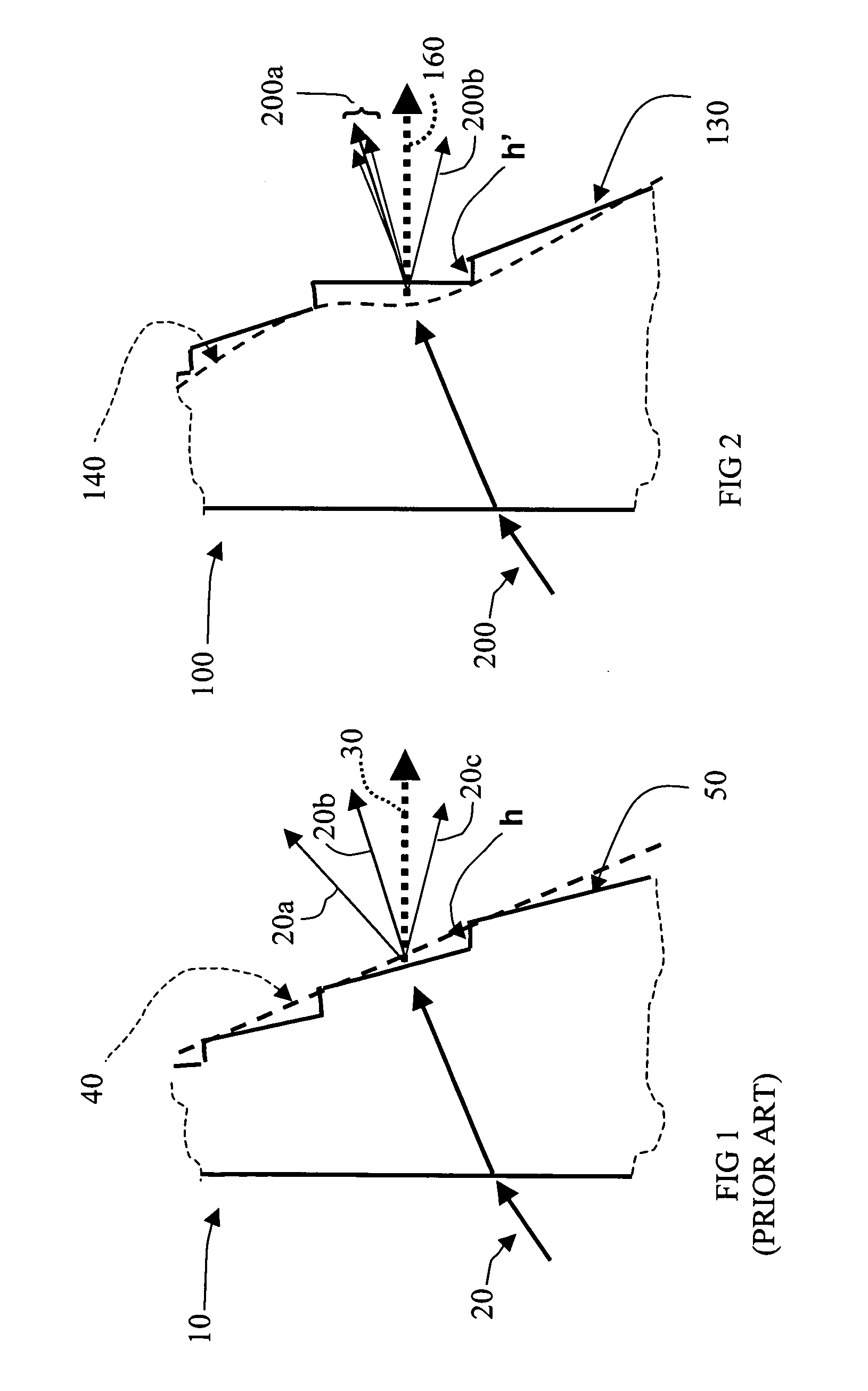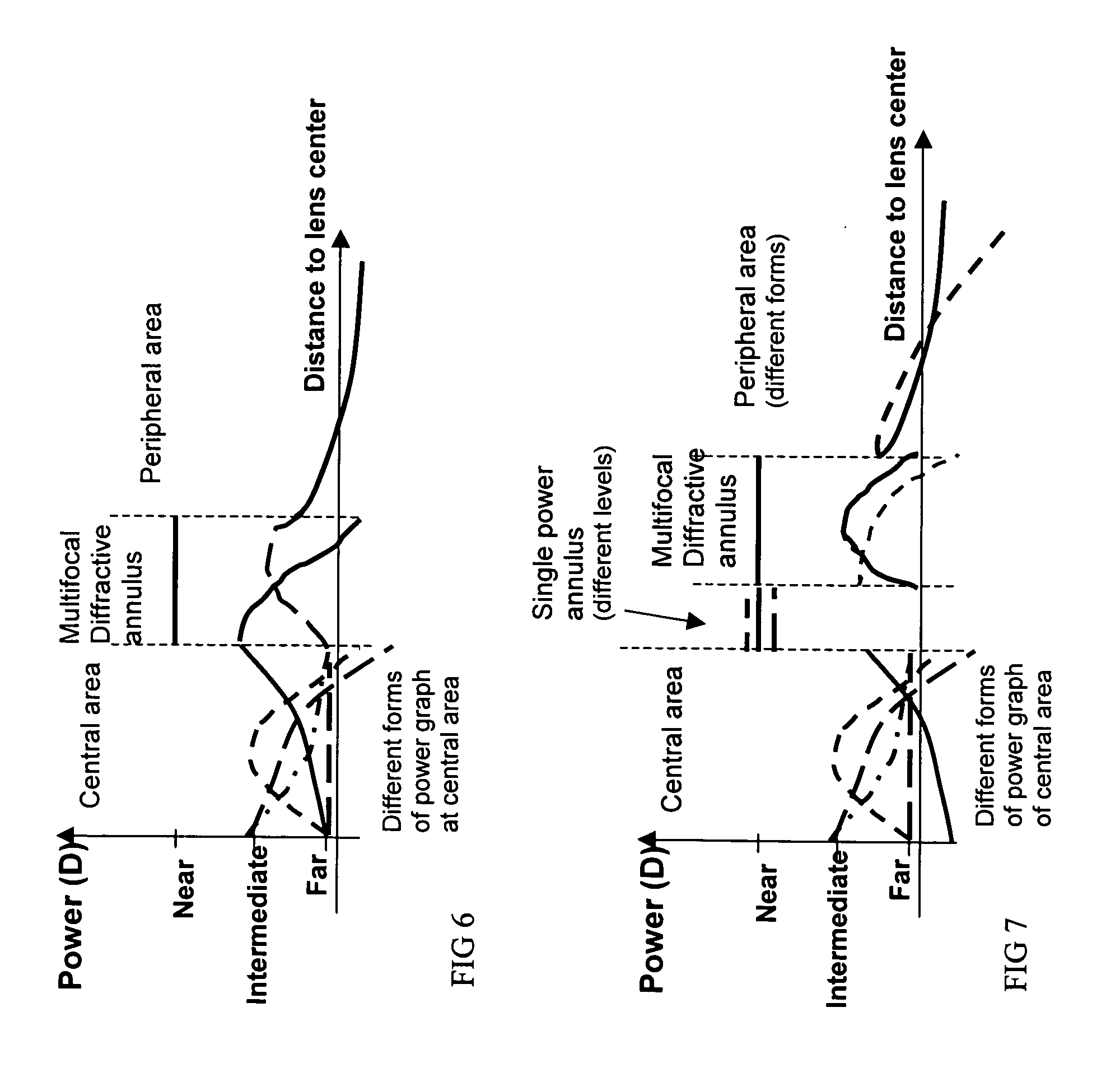Aspheric multifocal diffractive ophthalmic lens
a multi-focal, diffractive technology, applied in the field of multi-focal ophthalmic lenses, can solve the problem of increasing the cost of lens making
- Summary
- Abstract
- Description
- Claims
- Application Information
AI Technical Summary
Benefits of technology
Problems solved by technology
Method used
Image
Examples
Embodiment Construction
[0079]FIG. 1 describes a portion of a prior art diffractive lens 10 with blazed periodic structure 50 creating different diffraction orders indicating by the directions 20a, 20b, 20c, etc. along which the light can only be channeled. The figure includes input light ray 20 refracted by the lens 10. It also shows the refractive base curve 40 that would refract the exiting ray corresponding to the input ray 20 along the direction of zero-order diffraction 20b. Direction of (+1)-order diffraction is shown by 20a and (−1)-order diffraction by 20c. Theoretically, there are infinite orders of diffraction.
[0080]The FIG. 1 incorporates a reference to the “geometrical model” of diffractive lens by including blaze ray 30 as the ray corresponding to the input ray 20 and refracted by the blaze. The direction of the blaze ray 30 differs from the direction of 0-order diffraction 20b due to the different refraction angles of the rays at the base curve 40 and blaze structure 50. The angle difference...
PUM
 Login to View More
Login to View More Abstract
Description
Claims
Application Information
 Login to View More
Login to View More - R&D
- Intellectual Property
- Life Sciences
- Materials
- Tech Scout
- Unparalleled Data Quality
- Higher Quality Content
- 60% Fewer Hallucinations
Browse by: Latest US Patents, China's latest patents, Technical Efficacy Thesaurus, Application Domain, Technology Topic, Popular Technical Reports.
© 2025 PatSnap. All rights reserved.Legal|Privacy policy|Modern Slavery Act Transparency Statement|Sitemap|About US| Contact US: help@patsnap.com



